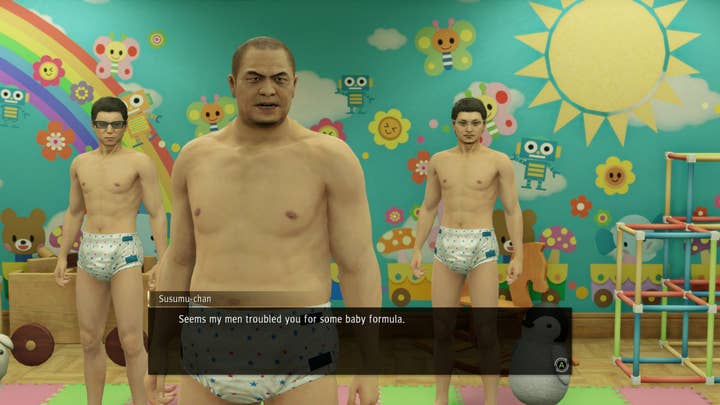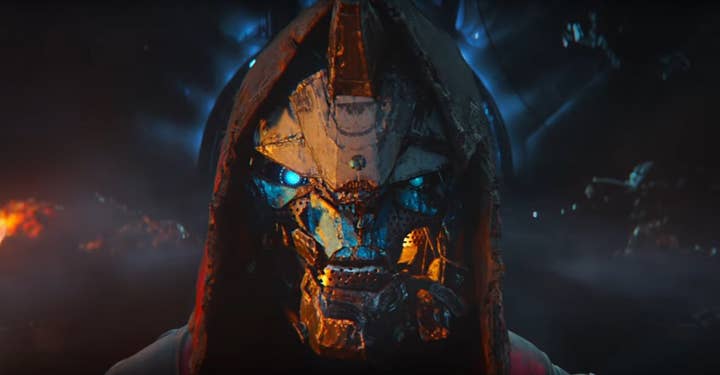Building anticipation: How to make engaging gameplay trailers
Marketing agency Gnet shares practical advice on elevating your marketing by getting the most from your footage
Trailers are an essential element in the modern game's marketing campaign. And a strong gameplay trailer can take a title from obscurity to the top of the pre-order list in a matter of days.
Conversely, a weak trailer can have a game struggling to leave an impression, let alone connect with its core audience.
At GI Live: Online, two directors from the Keywords-owned marketing agency Gnet -- director of brand management Niko DeMordaunt and group creative director Andy Mitchell -- shared practical advice on how studios and publishers can work with an agency to create the best gameplay trailers possible and elevate their marketing campaigns in the process.
This includes making something that your audience -- whether established or potential -- want to talk about, being self-aware, and the importance of both technology and trust.
Why gameplay trailers?
Trailers themselves come in different forms: there's the announcement or teaser trailer, various pre-release trailers (a staple of many a trade show and online showcase), launch trailers and short-form edits for TV, and post-release trailers for future content.
"Unlike other marketing assets the gameplay trailer isn't just marketing. It's that window into the eventual experience the gamer will have. It sets the expectation"
Niko DeMordaunt, Gnet
The gameplay trailer, as DeMordaunt explains, is somewhat different to all of these.
"Unlike other marketing assets the gameplay trailer isn't just marketing," he says. "It's that window into the eventual experience that the gamer will have when they play the game. It sets the expectation, which is the cornerstone of any successful campaign.
"And it's tricky, because although fans are seeing footage of the game they will eventually play, the gameplay that they're going to see will also be romanticised, dramatised to a higher degree. And that's a fine line, because you don't want to promise an experience that gamers won't have. But this is also your opportunity to win over your audience."
Taking a cinematic approach
To create engaging gameplay trailers for the likes of Bungie, Xbox and Activision, Gnet likes to take a cinematic approach.
"[We find] reference from other mediums," says Mitchell. "When you're looking at movies or TV shows, being able to identify things that are successful in other mediums [is useful].
"If you were to do a one-to-one copy-paste, you'd be called derivative. But when you put it into a game trailer -- when you have to translate something shot on film to something in-game -- it takes on a different life. It's like a mash-up: you're taking an iconic shot or scene from a movie and recreating it in a game that's a completely different genre. And it feels fresh, it feels new."
Mitchell says shot ideas often evolve once Gnet's team begins trying shots in the respective game itself, thanks to the emergent nature of gameplay systems.
Access to tools
In order for an agency or marketing team to effectively capture gameplay, frame shots and experiment with how best to present your game, Mitchell says it's important to communicate, collaborate and, crucially, have access to build tools.
Depending on the game and the development timeline, there may not be bandwidth to expand the camera tools for marketing. But Mitchell encourages developers to give it careful consideration, as it can yield strong benefits.
"Most people watch this stuff on tiny smartphones, so it's even more important to have your footage read clearly"
Andy Mitchell, Gnet
"If you put certain tools into your game that allow us to create unique shots, that gives you an edge because your competitors probably aren't able to create that kind of footage. So, not only does it make the game feel more unique, it makes it feel more cinematic, and just more ownable visually.
"In addition to helping us rev on stuff faster, some of these tools are the difference between it being two hours to get one shot or, potentially, 20 minutes."
Getting the balance right
Many games are best understood when players actually play them. But a good gameplay trailers needs to communicate what a game is, or what it's about, without becoming too difficult to follow, says DeMordaunt. Some common mistakes the Gnet crew recommend avoiding are overstuffing trailers with jump cuts, displaying HUD or UI unnecessarily, and running with a disjointed trailer when changes could be made.
Mitchell explains: "You always want to preserve the gameplay when it's right, depending on what you want to accomplish. For a story trailer, it's less important. Or an announce trailer, [where] you might just want to communicate the world or the themes of the game.
"But when it is time to highlight those moments when you want the game to come through, [in] choreographing and orchestrating those moments a lot of care has to been done. And clarity is the most important part of that."
Two questions the team always asks during the edit process are 'Does this make sense?' and 'Can this read better?'. It might seem obvious, but viewers need to understand fundamentally what's happening in a scene and what the gameplay mechanics are, but developers need to present this in a cinematic and impactful way.
"You will have extended walkthroughs to show the game unedited," Mitchell reminds studios. "But when you do choose to cut to first-person or third-person, or whatever, and highlight a gameplay moment, it really just comes down to clarity."

Mitchell adds that keeping clarity in mind also helps because of the millions now viewing media on smartphones, as opposed to large screens.
"Most people watch this stuff on tiny smartphones, so it's even more important to have your footage read clearly, your editorial choices feel intentional. And also it helps when you go to make those cut-downs. When you're making shorter form content for social or paid-for media. The more your game reads well, it's going to pay off later when you have to make short assets," he says.
Getting everyone on the same page
This mentality can also help when the time comes to interweave clips with a game's CG or in-game cutscenes.
"Having clarity early on about what's going to be ready when helps a lot," says Mitchell. "But beyond the technical side, it's important [to discuss] what story beats you want to reveal when, what's a spoiler and what's not, and being able to plan ahead for what you're going to reveal throughout the campaign."
"People like to share things they feel emotionally connected to. That doesn't mean they're weeping at the end of it. But did they laugh? Did they smile? Was something shocking or surprising?"
Andy Mitchell, Gnet
It can be tempting to share lots of details early on. But Mitchell advises holding back and dispersing narrative hooks and gameplay mechanics throughout a game's campaign.
"It pays off dividends, really," he says. "And if your campaign can feel like it's telling a story as well it can feel more cohesive."
Of course, some developers might not want to reveal information in the marketing at the risk of spoiling things for players.
"For what it's worth, this whole thing should be a dialogue," says Mitchell, explaining that spoilers may go into a rough edit and be cut before the final edit. "It should be a little bit more of a discussion, because one of the things an agency can bring is perspective. Something that may have flown under the radar internally, we might think is really cool and leverage that. Sometimes things that may have been considered a spoiler might be worth revealing sooner than expected."
Making sure your trailer has 'talk value'
Nowadays, there's tonnes of ways potential players can find out about and weight up whether your game is for them: from watching a streamer showcase it, playing a public beta, or reading customer or critical reviews. And in this crowded space, the gameplay trailer needs to standout all the more. Developers need to ensure their trailers have what Gnet refers to as "talk value" -- something that's memorable and worthy of being shared.
"There's lots of ways we can do this," says Mitchell. "One is that people like to share these things if they feel emotionally connected to it. That doesn't mean they're weeping at the end of it. But did they laugh? Did they smile? Was there something that stood out to them, [and was] it shocking or surprising?"
Having these kind of moments can give your core audience something to enjoy, and they may then go on to share it with others. And, as Mitchell points out, it might get turned into a GIF, as was the case for trailers they created for Yakuza: Like a Dragon, which featured grown men in diapers.

"A game like Yakuza: Like a Dragon, that's a very special series," says Mitchell. "They wear their heart and weirdness on their sleeve. And so, when we went to make a trailer for it, we said 'let's not shy away from that.' That's when you're fortunate enough to have a game that has that kind of talk value built into it."
At other times, however, Mitchell says you have to "conjure" those moments, which was the case with the Call of Duty: Warzone gameplay reveal trailer.
"Self-awareness humanises a developer or publisher. It shows that, despite being a 'corporation,' we are still fans at our core. We know what you love, and we love it, too"
Niko DeMordaunt, Gnet
"When our team was approached with creating that trailer, it was a really unique challenge. Because the game had to feel like a Call of Duty game, but it had to feel different. It had to feel bigger. It had to stand out. It had to be memorable," says Mitchell.
So, along with quadbikes hurtling through bombed airport lobbies and a soldier being cut to pieces by a low flying chopper, they including a first-person shot of a player character locking eyes on an opponent parachuting directly towards the camera. Before the opponent can touchdown, he is shot in triumphant 'action movie' style by the dual pistols-wielding player.
"Would you really play the game that way?" Mitchell asks. "Probably not. But that does standout as being memorable. And something that you hadn't really seen in a Call of Duty game or a battle royale game up to that point".
Self-awareness
Another useful tool in the game marketeer's arsenal is self-awareness, not just around the realities of your game but the conversations it might be prompting and the reactions from your fanbase.
"I think self-awareness goes a really long way, especially with players," says Mitchell. "You hear it all the time: about how they crave transparency and honesty. And self-awareness is a really good way to do that. But you have to walk a fine line. If you're too self-aware -- for instance, if you ship a game that is buggy -- it can be really risk to lean into that. But you can also defuse the situation by addressing it."
Mitchells adds that you don't want to "steal" from the community, by taking a meme they've created, for example. But you do want to acknowledge conversations or memes that your audience have shared by giving them a knowing wink, if you will.
"I think self-awareness also just humanises you, whether you are a developer or a publisher," adds DeMordaunt. "It shows that, despite being a 'corporation,' we are still fans at our core. We care about out this IP. We know what you love, and we love it, too."
You can watch the full talk here:









